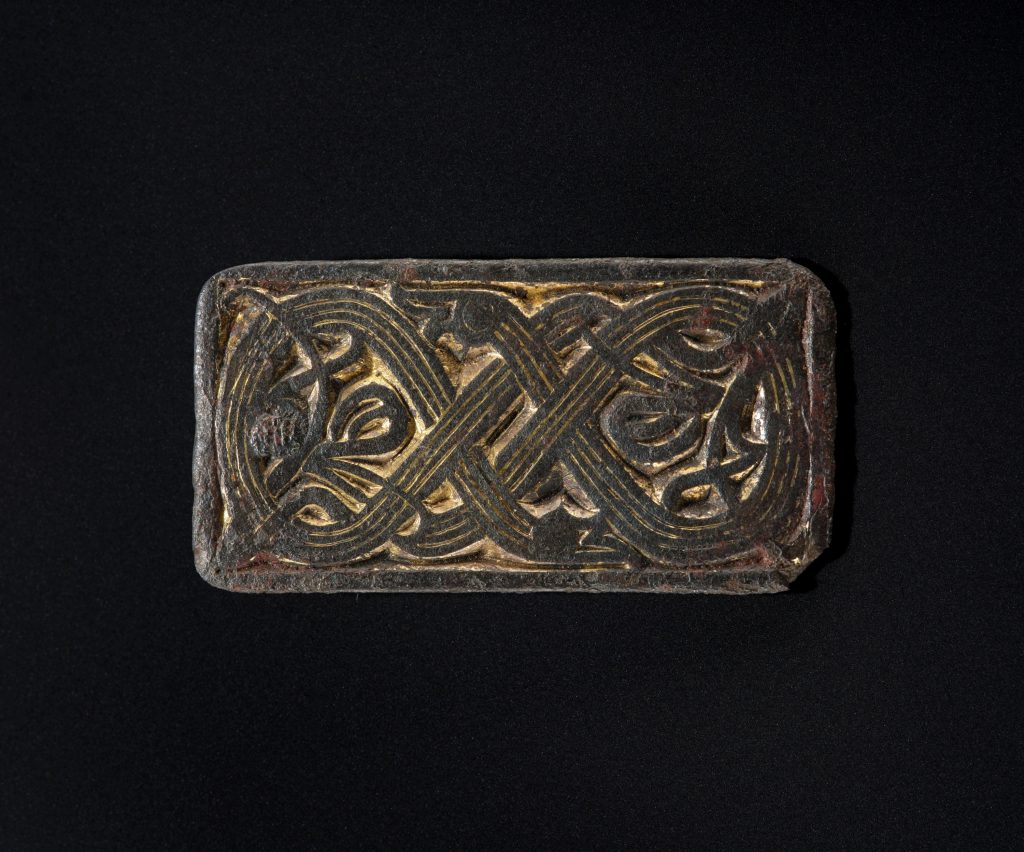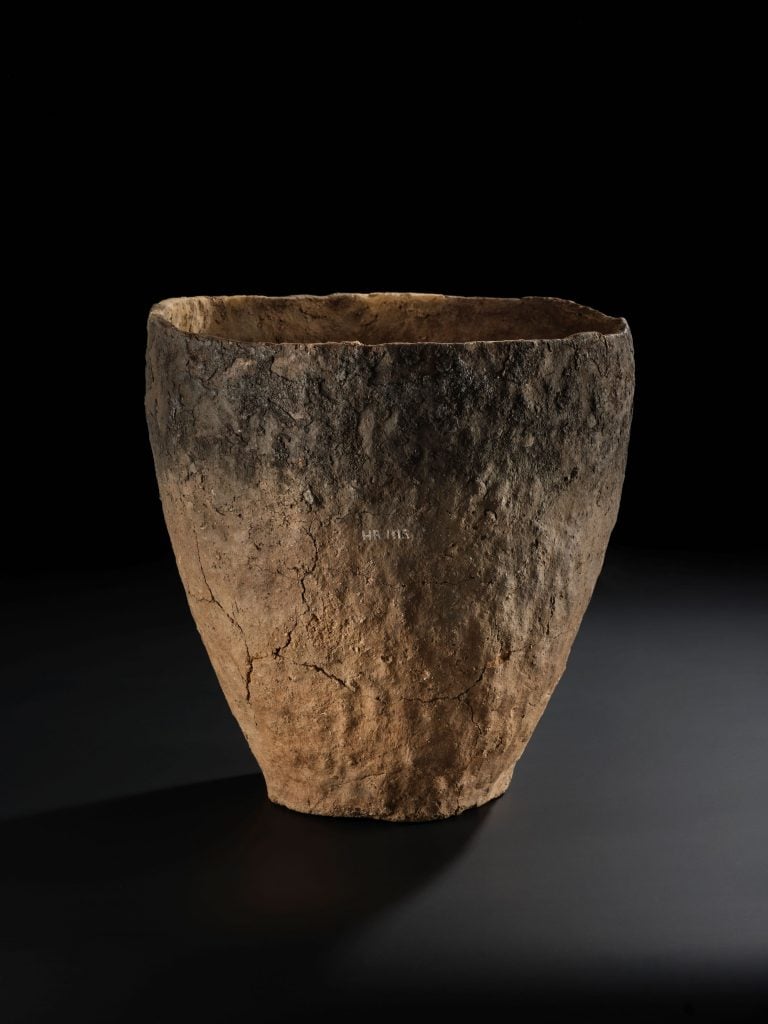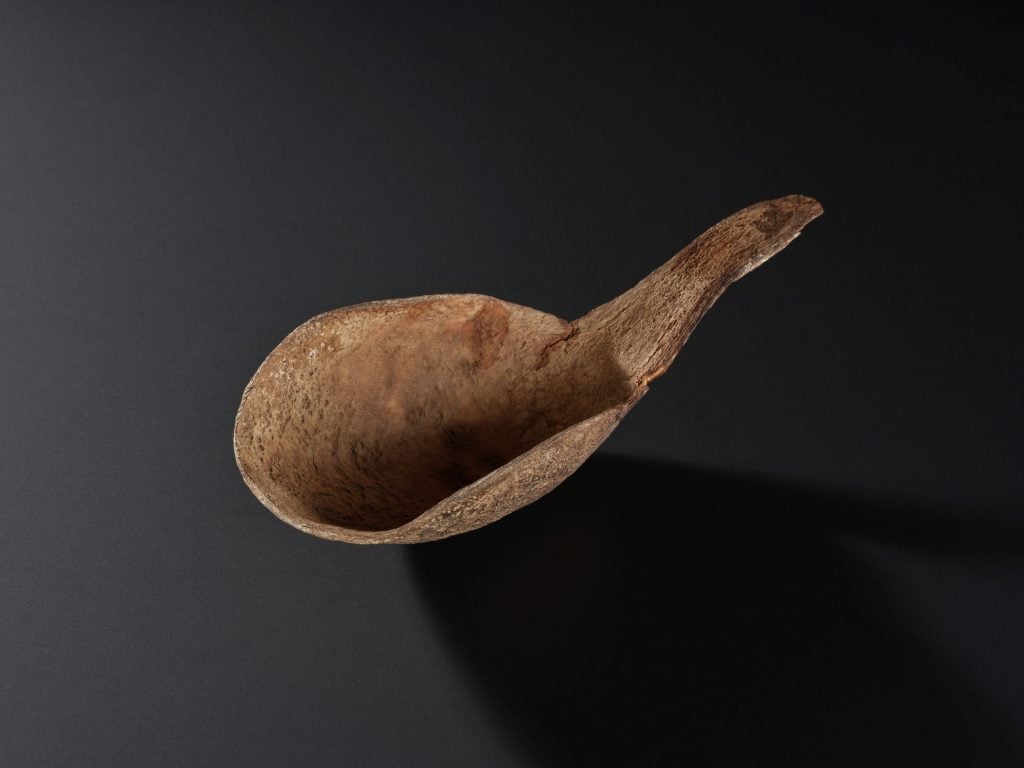Art & Exhibitions
See the Rare Neolithic and Viking Treasures Returning to Scotland for Display
Human activity on the remote Scottish island dates back to 6,000 B.C.E.

On the Isle of Lewis in Scotland’s Outer Hebrides, peat—that spongy stuff found in bogs and made of partly decomposed vegetation and organic matter—has long been a vital resource for heating, cooking, and yes, making whisky. Peat has also proven an invaluable keeper of the island’s past. Waterlogged, acidic and oxygen poor, it slows decay, and as a result remarkable artifacts have been pulled from the bogs that cover roughly a third of the island.
One such item is a 2,500-year-old clay pot from Achmore (“big field” in Gaelic) that dates from a time when the island was gradually transitioning to the Iron Age. Simple and unadorned, it stands as an exceptionally rare example of craftsmanship prior to the arrival of the Vikings.

The 2,500-year-old clay pot from Achmore. Photo: National Museums Scotland.
It’s one of more than 40 artifacts that National Museums Scotland has sent to Lewis on loan. The artifacts are being exhibited at two local institutions, Comunn Eachdraidh Nis and Kinloch Historical Society Museum, as part of NMS’ national strategy to share its collection and expertise across the country.
At Nis, a local community center in North Lewis, “na Dorsan” (The Doors) is being staged on the centennial anniversary of the area’s resettlement, following the forced land clearances in the late 18th century. Through fragments of pottery, carved animal bones, wooden instruments, and metal tools, the exhibition tells the local region’s story from early farmers 6,000 years ago through to the first millennium C.E.

Group of ax heads that date from 3800 B.C.E. to 2500 B.C.E. Photo: National Museums Scotland.
“This exhibition launch will be the first in a series of community events to celebrate the centenary, culminating in the unveiling of a stone monument by Urras Oighreachd Ghabhsainn later this year,” said Anne Macleod, operations manager at Comunn Eachdraidh Nis.
The Kinloch Historical Society Museum will stage “Archaeology Homecoming” through March 2025. Alongside the Achmore pot, the museum is exhibiting a group of Neolithic ax heads that date as far back as 3,800 B.C.E. Also of interest is a Viking bronze buckle that features an intricate looping pattern. It is believed to have been cast somewhere in Scandinavia before making its way to Lewis.

A scoop or ladle made from horn. Photo: National Museums Scotland.
“The partnership with National Museum of Scotland is at the heart of sharing and learning about the history of our area,” said Anna MacKenzie, heritage manager at Kinloch Historical Society. “As the name Archaeology Homecoming suggests, this will be the first time these chance finds will be on display in Lochs.”
The earliest evidence of human activity on Lewis date back to 6,000 B.C.E with the inhabitants gradually clearing woodlands and developing farms. Gaelic-speaking peoples arrived in the first century C.E., followed by the Picts, and the Vikings, who settled on Lewis in the ninth century. The island’s most famous archeological discovery are the Lewis chessmen, ornately carved pieces of walrus ivory that were found in 1831 and are held jointly by the British Museum and National Museum of Scotland.





